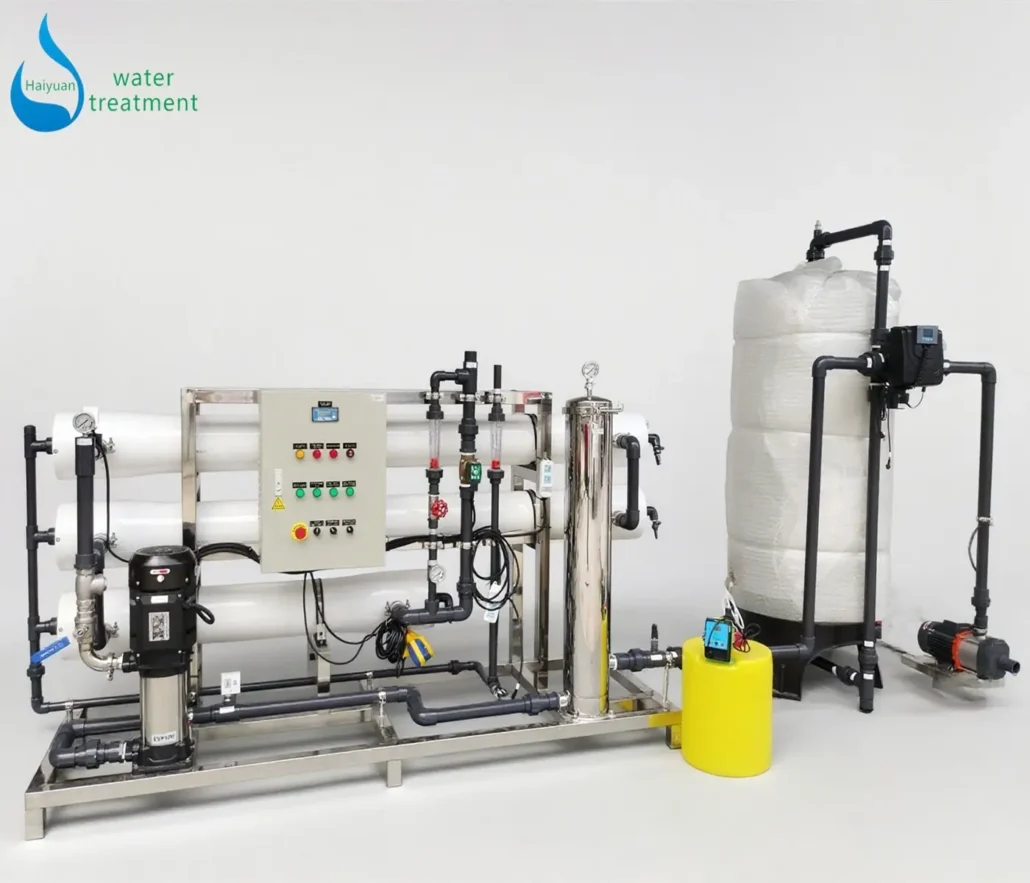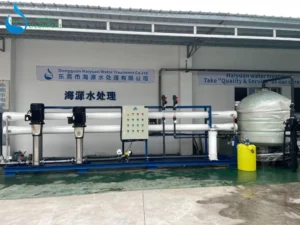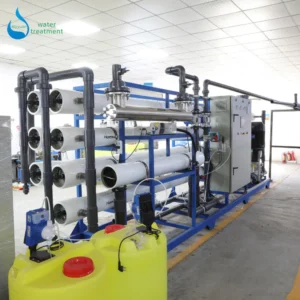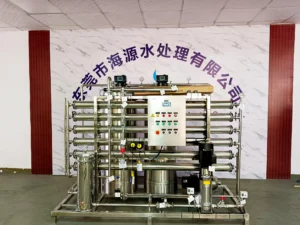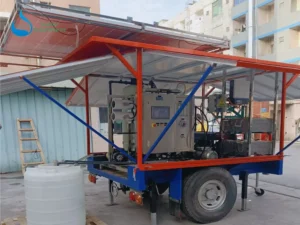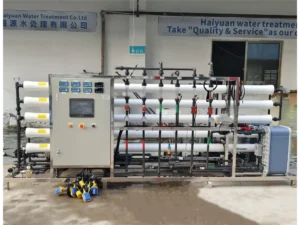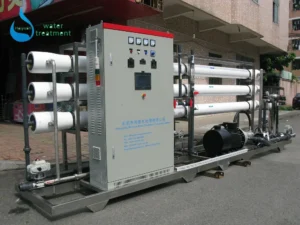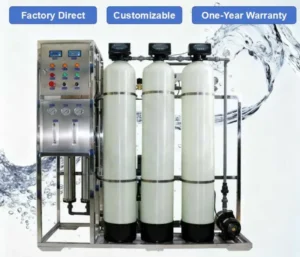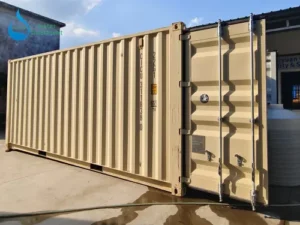How a Reverse Osmosis Machine Helped a Kyrgyzstan Greenhouse Achieve Ideal Irrigation Water
A client from Kyrgyzstan contacted us with a request for a reliable reverse osmosis machine. The customer operates a modern greenhouse and required purified water for irrigation. Because the source water TDS was relatively high, it was essential to reduce it to a safe level of 50–120 ppm. This would protect the crops and ensure healthy plant growth.
Project overview about 5000l reverse osmosis machine
-
Client: Rinat, Kyrgyzstan
-
Application: Greenhouse irrigation water
-
Feed Water: Well water, pH 6.9, TDS ≈ 750 mg/L
-
Product Water Requirement: TDS controlled at 50–120 ppm
-
Capacity: 5 m³/h
-
Power Supply: 380V / 50Hz / 3Phase, 7.35KW
-
Installation Size: L6.0 × W1.2 × H2.1 m
-
Production Time: 6 weeks
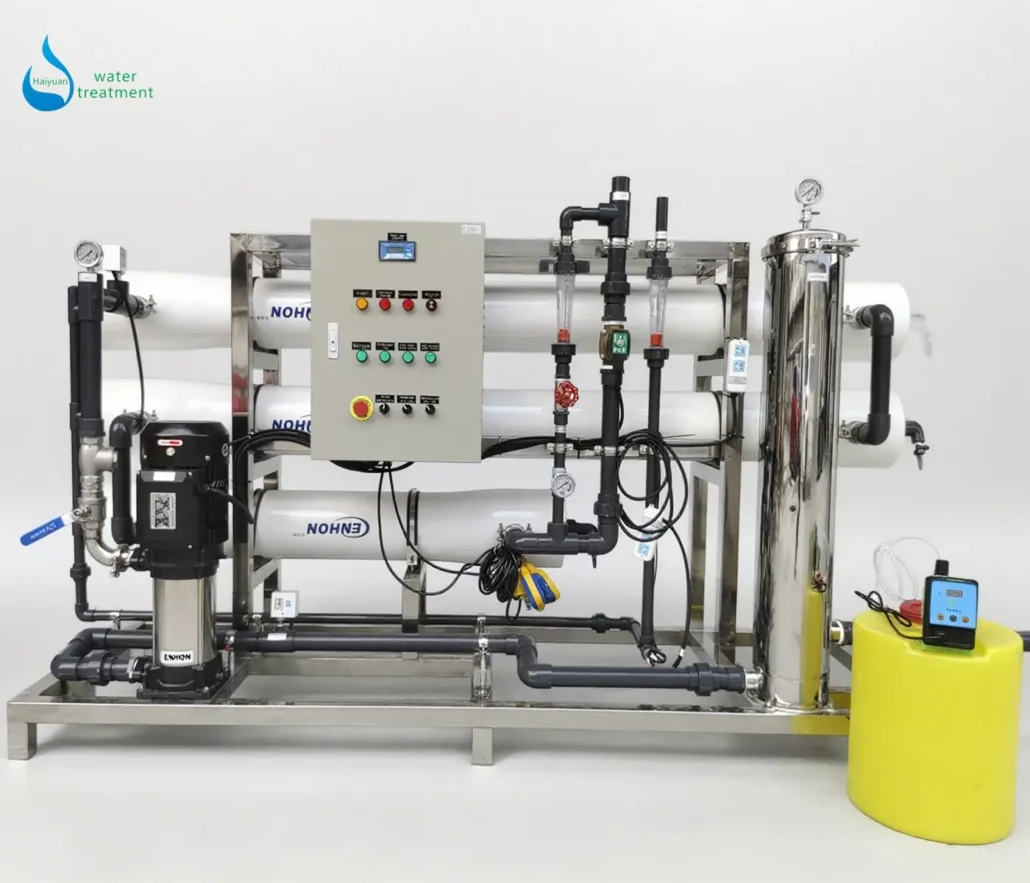
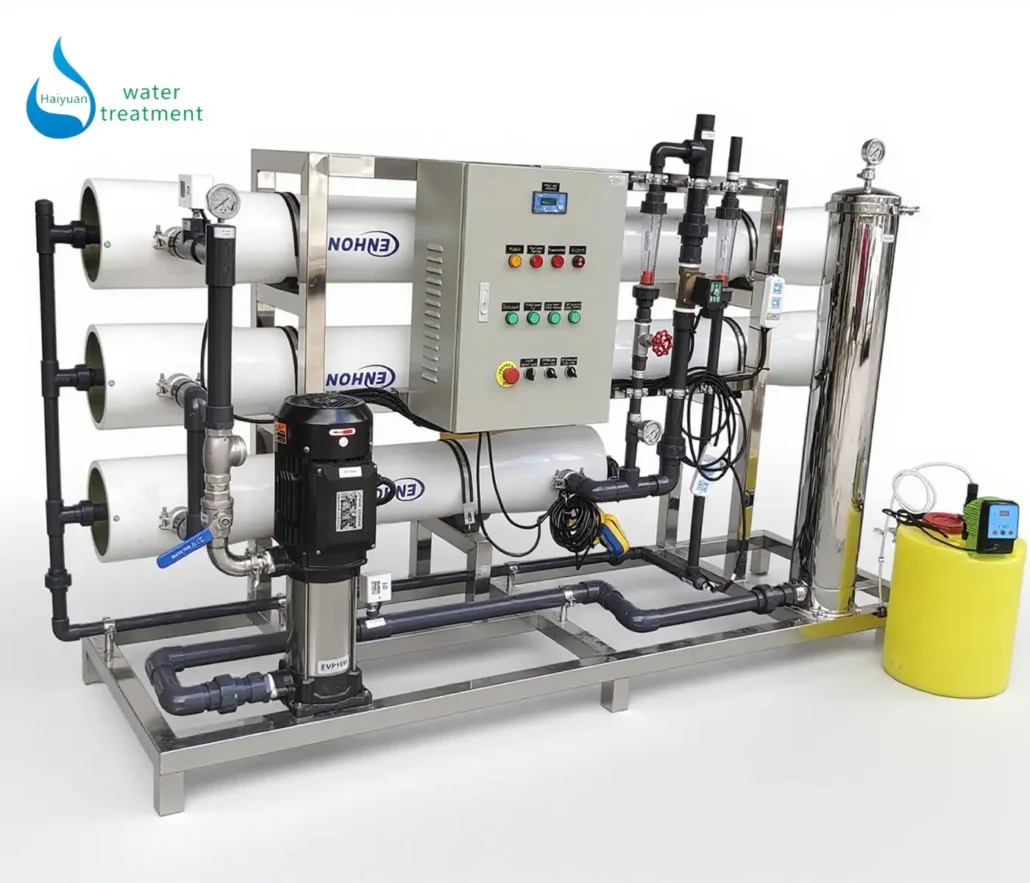
Process Flow of the Reverse Osmosis Machine
Raw Water Tank → Booster Pump → Multi-Media Filter → Precision Filter → High-Pressure Pump → RO → Product Water Tank
| Component | Function |
|---|---|
| Raw Water Tank | Stores the raw water before treatment |
| Booster Pump | Provides initial pressure for pre-treatment |
| Multi-Media Filter | Removes suspended solids, turbidity, and impurities |
| Precision Filter | Removes fine particles and protects RO membranes |
| High-Pressure Pump | Supplies the required pressure for RO operation |
| RO (Reverse Osmosis) | Removes salts, minerals, and dissolved solids |
| Product Water Tank | Stores the purified water after RO process |
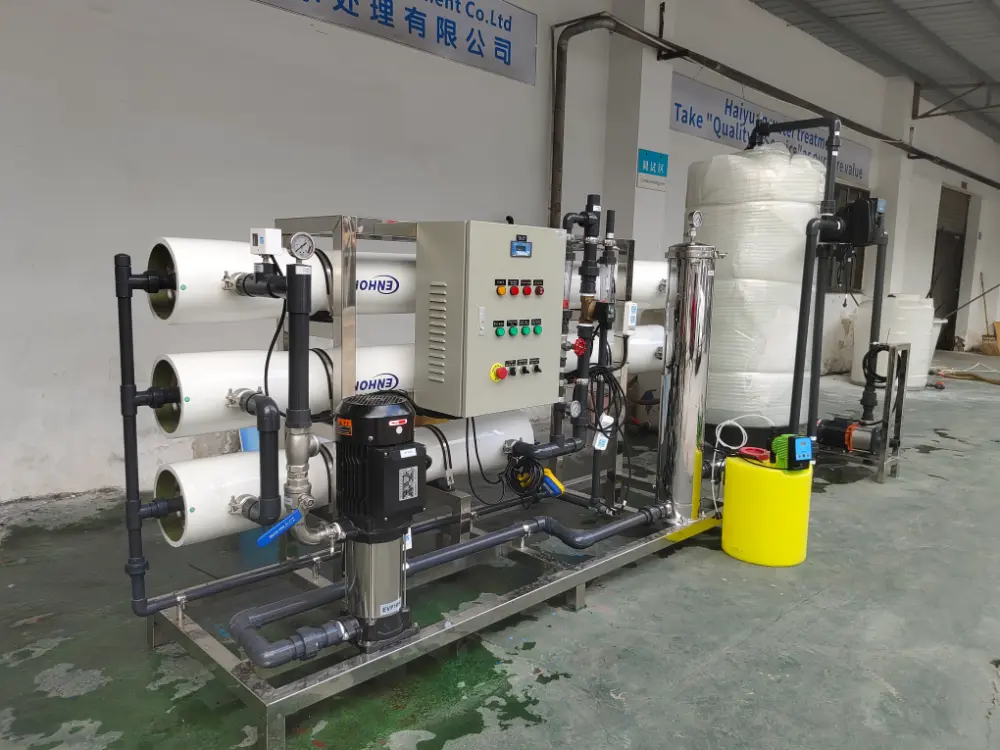
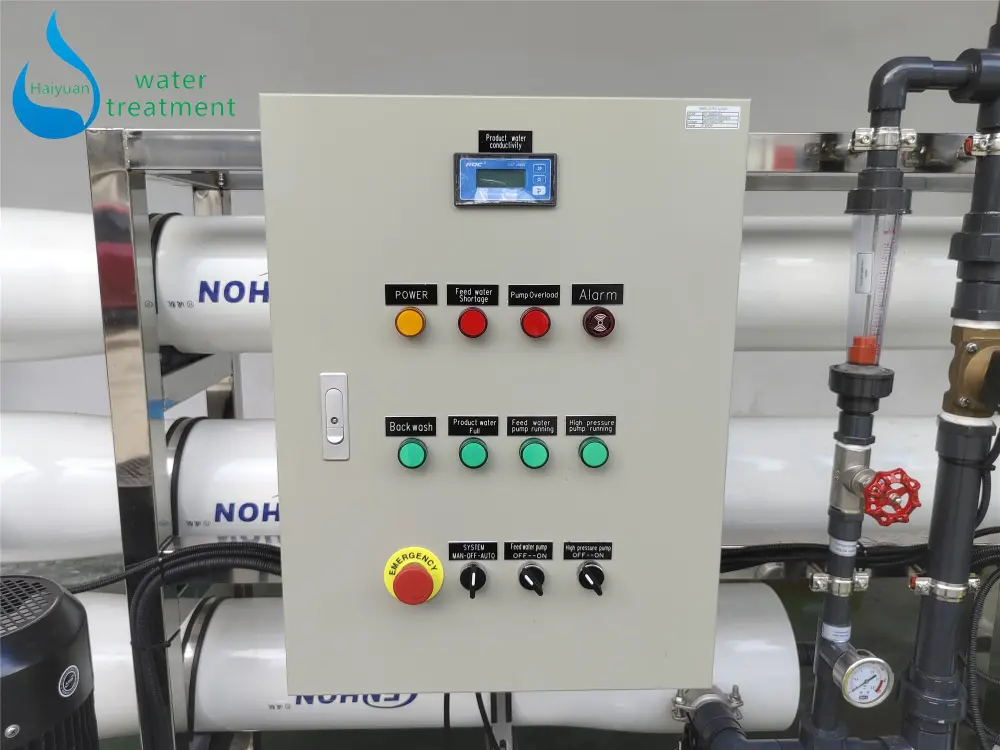
About the Process Flow
The reverse osmosis system starts with the raw water tank, which stores well water and provides a stable supply. Then, the water is pressurized by a booster pump and passes through a multi-media filter to remove suspended solids and turbidity. After that, it goes through a precision filter, which eliminates fine particles and protects the RO membranes. Next, a high-pressure pump supplies the necessary pressure for the RO membranes, where dissolved salts and impurities are removed, reducing TDS to the required level. Finally, the treated water is collected in the product water tank, ready for greenhouse irrigation.
As a result, the system was fine-tuned to achieve the customer’s requirement, producing product water consistently within the 50–120 ppm TDS range.
Project Highlights
-
Custom Design: Tailored for greenhouse irrigation with strict TDS control.
-
Compact Installation: 6×1.2×2.1 m footprint, easy to transport and install.
-
Reliable Operation: High-pressure RO system ensures continuous water supply.
-
Energy Efficient: Designed for 380V/50Hz power grid, matching local standards.
Customer Benefits
-
Healthy irrigation water: Prevents soil salinity and ensures better crop yield.
-
Cost-effective: Reliable performance reduces maintenance and operational costs.
-
Custom-designed: Fully adapted to the local water conditions in Kyrgyzstan.
Why Use Reverse Osmosis?
Reverse osmosis (RO) is widely used because it is one of the most effective methods to remove dissolved salts, minerals, bacteria, and other impurities from water. Unlike simple filtration, which only removes visible particles, RO uses semi-permeable membranes that allow only water molecules to pass through. Therefore, it can significantly reduce TDS (total dissolved solids) and ensure stable water quality.
In agriculture, especially in greenhouses, using water with high salinity can damage crops, reduce yields, and affect soil structure. Because RO lowers the TDS to a safe range, it prevents salt accumulation in the soil and provides ideal irrigation water.
Moreover, RO systems are flexible and can be customized for different raw water qualities and applications, such as drinking water, industrial water, or irrigation. As a result, farmers and greenhouse operators can rely on RO to protect their crops, reduce risks, and achieve sustainable production.
Conclusion
This project clearly demonstrates how a well-designed reverse osmosis machine can solve agricultural water problems in Central Asia. Moreover, with the 5000LPH RO system, our Kyrgyzstan customer now enjoys stable, high-quality irrigation water for their greenhouse. Therefore, the solution not only protects crops but also ensures sustainable agricultural production.

